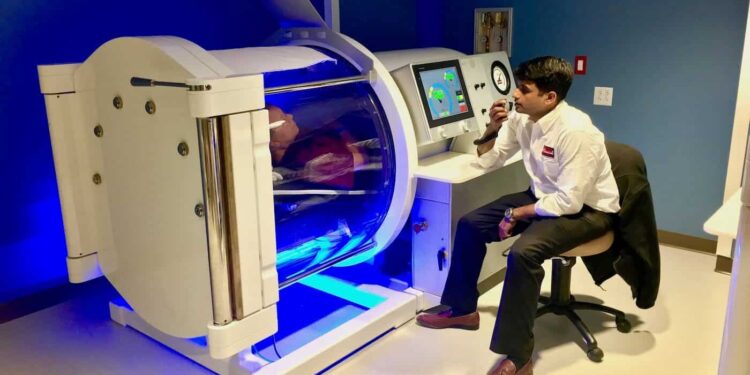In healthcare, certain elements play a silent yet indispensable role in ensuring patients’ vitality. One such elemental force is medical oxygen, a lifeline for individuals grappling with respiratory challenges and other critical conditions. In this exploration, you will delve into the profound significance of medical O2 in the treatment landscape, unraveling its crucial role in sustaining life.
The Essence of O2
At its core, oxygen is not just a substance but a fundamental therapeutic tool that healthcare professionals wield to address a spectrum of medical conditions. This colorless, odorless gas is not a mere accessory but a crucial component in various therapeutic interventions, especially those related to respiratory distress.
Oxygen and Respiratory Support
One of the primary areas where therapeutic oxygen shines is in the domain of respiratory support. Patients suffering from conditions such as pneumonia, chronic obstructive pulmonary disease (COPD), and asthma often experience difficulty in breathing.
It steps in as a supportive ally, providing the extra boost needed to ensure sufficient oxygen levels in the body. This intervention is not a luxury but a critical necessity, preventing the escalation of respiratory distress to life-threatening levels.
Emergency Situations and Therapy
Time is of the essence in emergencies, and swift, effective measures can make the difference between life and death. Therapeutic oxygen is a frontline responder in emergencies, offering a rapid means to stabilise patients in critical conditions.
Whether it’s a heart attack, trauma, or sudden respiratory failure, the administration of O2 can be the decisive factor in ensuring the patient’s survival until more comprehensive interventions can be implemented.
Reading Suggestion: Veibae Face Reveal
Surgeries and Anesthesia
Beyond respiratory support, therapeutic oxygen plays a pivotal role in the intricate dance of surgical procedures. During surgeries, patients are often placed under anesthesia, which can compromise their natural breathing patterns.
Delivered in controlled concentrations, it becomes the respiratory surrogate, ensuring that vital organs receive the O2 they need to function optimally throughout the procedure. In essence, the invisible guardian facilitates the successful navigation of the delicate surgical landscape.
Chronic Conditions and Home Therapy
For individuals grappling with chronic respiratory conditions, the significance of therapeutic oxygen extends beyond hospital walls. Home therapy has become a lifeline for those managing conditions like severe COPD.
This therapy allows patients to maintain a semblance of normalcy in their lives, providing them with the oxygen they need without confining them to a hospital bed. It’s a silent companion that empowers individuals to lead fulfilling lives despite the challenges posed by chronic health conditions.
Precision in Dosage: The Art of Administration
Administering therapeutic oxygen is not a one-size-fits-all endeavour. Healthcare professionals wield the art of precision when determining the appropriate dosage for each patient.
Too little, and the therapeutic effect is compromised; too much could lead to unintended consequences. The nuanced calibration of its delivery underscores the importance of trained healthcare providers who understand the delicate balance required for optimal patient care.
Ensuring a Reliable Supply
While the focus often lies on the therapeutic application of oxygen, the logistics of ensuring a reliable supply should not be overlooked. Hospitals and healthcare facilities rely on meticulous planning and infrastructure to guarantee its constant stream. From storage and distribution to the intricate network of pipelines, every step in the supply chain is orchestrated to ensure that this vital gas is always available when needed.
Reading Suggestion: how long do idiots live 12-15
Conclusion
In the tapestry of healthcare, medical oxygen emerges as a silent hero, weaving its way through various medical scenarios with quiet efficacy. From emergency rooms to home care settings, its significance cannot be overstated. As you explore the realms of treatment, it becomes evident that this vital gas is not just a tool but a beacon of hope, a lifeline that breathes vitality into the very essence of healthcare.























